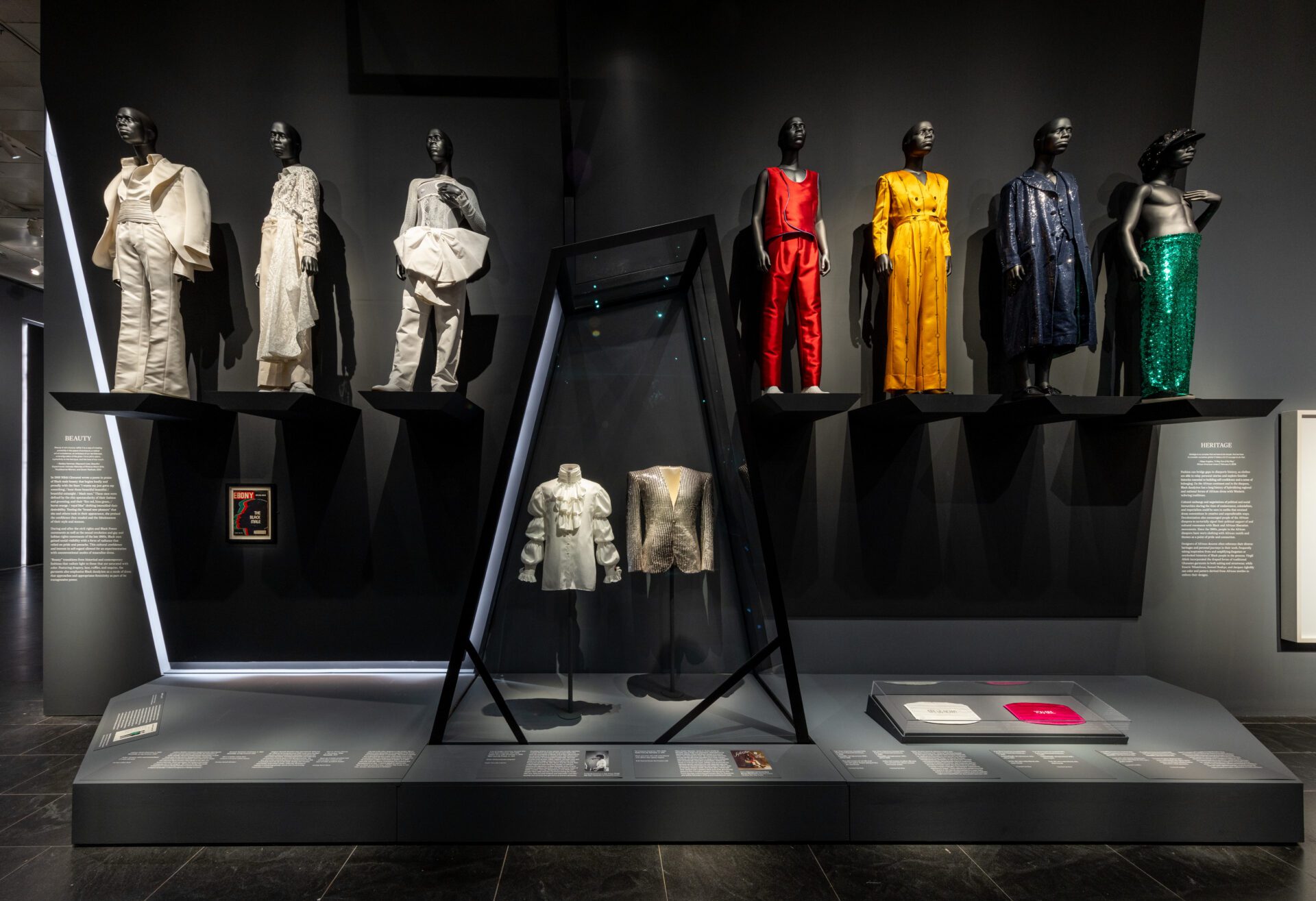There is a certain sophistication found in knowing oneself.
Within and throughout this act is cultivated a particular type of elegant assurance that allows for both the creation of internal comfort and the expression, if one desires, of delightful idiosyncrasy and unconventionality. Though they encompass different identities and operate within distinct modes, the strands of Black dandyism that are synthesized in Superfine: Tailoring Black Style remain consistently resistant in such a carefully cultivated confidence.
This year’s annual spring exhibition at the Metropolitan Museum of Art’s Costume Institute, an encapsulation of such extraordinary self-realization, extends itself beyond the boundaries of its already astounding expectations. For though it might rest upon the public eye in the shadow of the accompanying Met Gala, its implications appear to be constantly developing beyond simply one day or design.
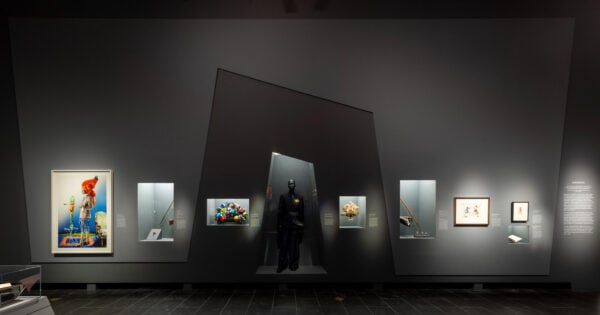
In an interview I conducted in April with Monica L. Miller, a professor at Barnard College and this year’s guest curator, she told me that, “we always knew that it would be historical.”
Inspired by her enriching book, “Slaves to Fashion: Black Dandyism and the Styling of Black Diasporic Identity,” the show is filled with physical manifestations of Miller’s nuanced narrative.
Divided into 12 sections that work to portray a particular characteristic of Black dandyism, I initially worried that the exhibition would succumb to a problem rather common in such thematic showings: confinement. That, as one walked through, the delineations would be far too sequential to capture the fluidity found within the figure of the dandy and the spectrum of its conduct. Yet, when Miller described the characteristics as being those which “define, but are not definitive of, dandyism,” the exhibition’s careful handling of complexity was once again made completely unquestionable.
A deeply heartfelt example of such attention to detail can be seen in the show’s presentation of the sartorial poise and prowess of André Leon Talley. For though the head curator, Andrew Bolton, noted that “the significance of this exhibition is undoubtedly emphasized in our modern world,” he also made a point to highlight the fact that Superfine is an homage to the late tastemaker.
“The catalyst to the show was the passing of André in 2022,” he said at the press preview, further confirming the lasting impact of Talley on the world of art and culture.
This unwavering respect and friendship saw great consideration given to the display of Talley’s elegant outfits. Arranged in a prominent corner of the gallery, drawing the line between the “Respectability” and “Champion” sections, Talley’s Morty Sills suit with maroon accents and matching tie stood in an understated splendor.
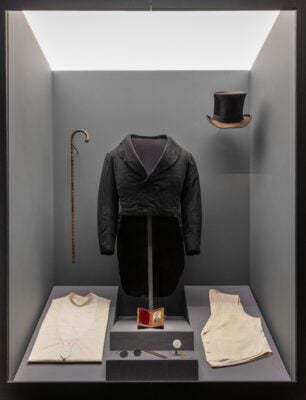
This ensemble, comprised of fine tailoring, rich colors and simplistic yet complementary accessories, was made as a brilliant bridge between the two aforementioned categories. Positioned a few feet away from an array of ephemera associated with W.E.B. Du Bois, one could see, in vivid detail, the evolution of refinement across generational gaps.
In our interview, Miller remarked that she “wanted people to see how dandyism is a tool, and a strategy, and a practice, that creates different effects in different contexts.”
This juxtaposition, with its exemplification of historical underpinnings and the budding promise of postmodern personal flair, did just that.
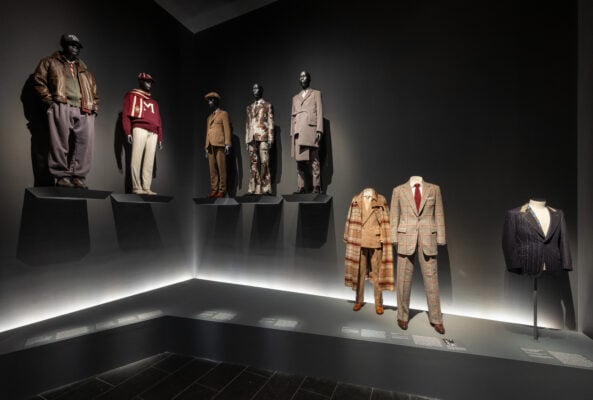
Further examples of dandyism’s utilization as a tool can be found in the “Disguise” section, wherein a close focus is given to gender-nonconforming individuals and those who use self-styling as a way to seek out an ideal existence. Here, two specific examples are found in the presentation of items concerning the biracial butch lesbian and drag king, Stormé DeLarverie, and the escaped slaves Ellen and William Craft.
Often cited as the person who started the Stonewall Uprising, a studio photograph of DeLarverie suavely holding a pipe while wearing an intentionally oversized suit and a complementary fedora, hangs on the wall. Besides this dashing display is a depiction of the Craft couple and newspaper snippets detailing runaway slave advertisements. The Crafts escaped their enslavement when Ellen Craft, who passed as white, dressed up as a man while her husband pretended to be her servant, in a skillful subversion of gender and racial boundaries.
In positioning images of these people beside one another, though they daringly challenged their times’ gender norms and conventional manners of dress, one thing becomes intensely apparent: they did so out of a similar personal necessity and desire for dignity.
In this way, the exhibition works to make evident the fact that being a dandy does not simply entail dressing well, but instead comes down to a meticulous understanding and purposefulness. It is this intentional and aspirational component that separates the carefully constructed figure of the dandy from the mere fop, with the latter engaging in what Miller described as “fashion beyond the next boundary or hindrance that’s put in front of our ability to be fully ourselves, fully in a liberated mode.”
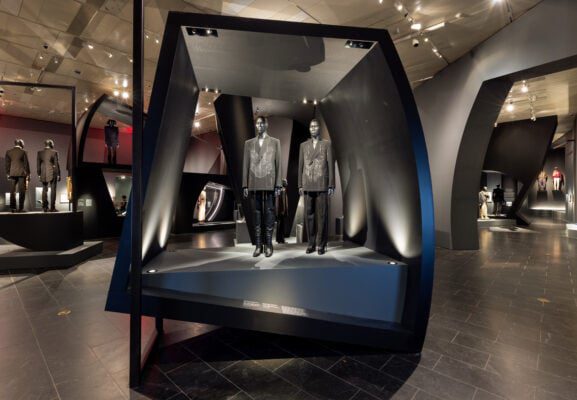
Although the exhibition centers on personal stories and sentiments, Miller also makes a point to call attention to the importance of collaboration when designing the display.
While her book laid the foundation for Superfine, she admits that it wasn’t a complete blueprint.
“I don’t think I could’ve done this exhibition when my book came out in 2009,” Miller said.
Though her original scholarship was an integral part of the execution of this show, she also explains that “the 15 years since the book was published have enabled me to put a really wide context around it,” noting that she works out of a “black feminist perspective that really is about collaboration and community.”
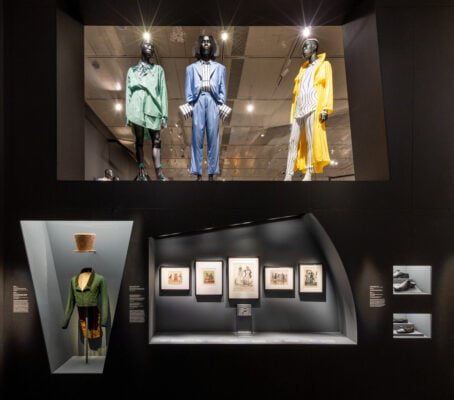
From its showcasing of the sword of Emperor Faustin I of Haiti and a Black Panther-beloved Afro pick, to its custom-fitted high fashion and display of André Leon Tally’s suits, Superfine shows us that taste and style extend well beyond what we wear, depending deeply upon our why. Far from simply a fashion exhibition, the multifaceted multimedia experience definitively marks the self-expression of the Black dandy as not being simply of one’s body, but of one’s sentiments, intents and adorations.
In describing the application of the self-actualization and expression found within styling that is so essential to the Black dandy, Miller remarked:
“It can happen in front of one’s own mirror, or it can happen on the street. There are many performative places, and there are many scales at which this happens, but it always happens.”
Ultimately, in its insightful presentation of the Black dandy through the lives of distinct individuals and an examination of the overall phenomenon, the exhibition shows people what it takes to make it happen. With its compelling and complex overview of its subject, it is a show that engages in refraction just as much as it engages in elevation, with each individual stitch, bright brushstroke or handcrafted accessory, made all the more amazing when placed in such an intricate and inspired context.
It not only informs viewers as to what Black dandyism is, but it also encourages recognition of themselves within it.
Caiden Cawthon is a legally blind writer who seeks to shine a light on that not readily seen, and can be found on Instagram at @caidencawthon.

